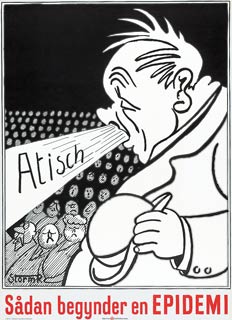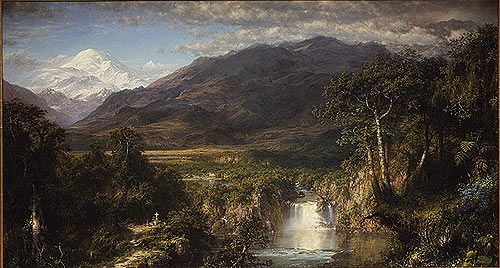
THE NEW YORK TIMES BOOK REVIEW
December 28, 2008
Brought to you by the Letter S
By JAMES PANERO
a review of
STREET GANG: The Complete History of “Sesame Street.”
By Michael Davis (Viking. $27.95)
In 1981, when I was 6, about 10 million American children daily tuned in to the PBS show “Sesame Street.” That same year, one of the writers for “Sesame Street,” my real-life neighbor, asked if I’d like to appear on the show. It was my golden ticket, but crossing over to the other side of the television screen can be a demystifying journey. The “Sesame Street” soundstage looked like a facsimile of the televised world — small and (surprisingly) indoors. The Muppets were controlled by operators; we were told not to look down at them. And there was Big Bird, stored in the middle of the set on a massive hook. When I reached out to pet him, a voice came from the sky: “Don’t touch those feathers!” admonished one of Big Bird’s creators, the remarkably named Kermit Love.
The address of 123 Sesame Street was never quite the same. Yet to be cast out of the garden of television-land can be a learning experience. “Street Gang: The Complete History of ‘Sesame Street,’ ” by Michael Davis, a former columnist for TV Guide, now offers the behind-the-lens story, the first comprehensive account, of this 39-year-old show.
The book details the awesome lengths that “Sesame Street,” undoubtedly the most workshopped and vetted program in the history of children’s television, went through to captivate its young audience. The show’s music and quick cuts concealed its educational ambitions. “Commercial breaks” advertised numbers and the alphabet through Jim Henson’s Muppet pitchmen: the Count, Grover and Cookie Monster. Kermit the Frog, wearing a trench coat, told fairy tales through news flashes from Rapunzel’s tower. Meanwhile, the urban street scenes at the center of the show communicated the social values of a progressive culture. Here was TV at its most sublime, but also an entrancing product of a liberal age, something Mom was happy for us to watch.
The “Sesame Street” story begins on a Sunday in December 1965. At 6:30 in the morning, 3-year-old Sarah Morrisett tuned in to the test patterns while awaiting her cartoons to begin a half-hour later. Her father, Lloyd Morrisett, an experimental psychologist and a vice president of the Carnegie Corporation, took note. “It struck me there was something fascinating to Sarah about television,” he says.
“Sarah Morrisett had memorized an entire repertoire of TV jingles,” Davis writes. “It is not too far a stretch to say that Sarah’s mastery of jingles led to a central hypothesis of the great experiment that we know as ‘Sesame Street’: if television could successfully teach the words and music to advertisements, couldn’t it teach children more substantive material by co-opting the very elements that made ads so effective?”
The thought of using the trappings of television for progressive ends seemed anathema to most intellectuals, who were wholly skeptical of this mass-culture medium, but Morrisett brought up his observation at dinner with Joan Ganz Cooney, the future creator of “Sesame Street.”
In the mid-1960s, as one of his grand social initiatives, Lyndon B. Johnson took up the cause of National Educational Television (later known as the Public Broadcasting Service), a lackluster confederation of chalk-dusted channels. Like the show she developed for PBS that would define the network, Cooney was steeped in the ideals of Johnson’s Great Society. In New York, while working in publicity for commercial television, she was introduced to William Phillips, co-founder of Partisan Review, the small but vastly influential journal of highbrow leftist opinion. In her spare time, Cooney did publicity for Partisan Review and produced a fund-raiser at Columbia that was attended by Norman Mailer, Mary McCarthy and Lionel Trilling.
Cooney’s ability to transcend the divisions between high and low culture defined her success at “Sesame Street,” which brought Madison Avenue advertisers and game show creators together with New York intellectuals and the education department of Harvard. Lloyd Morrisett, through his connections at the Carnegie Foundation, helped Cooney line up the millions in grants to cover the research, writing and production needed to create a show that could compete with the commercial networks. McGeorge Bundy, one of “the best and the brightest” in the Kennedy administration and by then president of the Ford Foundation, sharpened the show’s political edge by homing in on the children of the urban underclass. “Sesame Street” would be the television equivalent of Head Start, the federal child-welfare program founded by Johnson in the belief, Davis writes, that “the tyranny of America’s poverty cycle could be broken if the emotional, social, health, nutritional and psychological needs of poor children could be met.”
In its high ideals and comprehensive approach, “ ‘Sesame Street’ came along and rewrote the book,” Davis says. “Never before had anyone assembled an A-list of advisers to develop a series with stated educational norms and objectives. Never before had anyone viewed a children’s show as a living laboratory, where results would be vigorously and continually tested. Never before in television had anyone thought to commingle writers and social science researchers.”
“Sesame Street” turned the entertainment of children’s television into a science, as the program was extensively tested with nursery school audiences through a “distracter” machine that gauged children’s eye focus second by second during the run of each show. It is no coincidence that the program proved to be so popular. When early studies determined that its street scenes were faltering, Jim Henson brought about a final breakthrough. At the time, his Muppets were relegated to the “commercial” segments as cut-aways from the street-based story line. For this, Henson drew on his own experience. He had originally developed Kermit and the Muppets for commercial work; his 1950s show “Sam and Friends,” with its zany ads for Wilkins coffee, has now found a second life on YouTube. Over the objections of researchers, who had advised against mixing the fantasy of the Muppets with the reality of the street, Henson developed Big Bird and Oscar the Grouch to be central characters on the main stage, both driving and subverting the program’s self-seriousness.
Davis tracks down every “Sesame” anec dote and every “Sesame” personality in his book, and the result is more an oral history than a tightly organized narrative. The development of the show’s characters, as well as the performers’ own lives, can be illuminating. Bob McGrath, who has played Bob from the start, once enjoyed a pop singing career in Japan. Gordon, the neighborhood’s black role model, played by Matt Robinson and then Roscoe Orman, was named for the photographer Gordon Parks. The character Susan, Gordon’s stay-at-home wife, was once denounced by feminists. Emilio Delgado and Sonia Manzano joined the cast in the ’70s as Luis and Maria after protests against the show’s lack of Hispanic characters. Will Lee, who played the store owner Mr. Hooper, came through the Yiddish theater and the radical Group Thea ter, and was blacklisted in the ’50s; Lee’s death in 1982 became a defining moment when “Sesame Street” chose to address the news directly on the air. Northern Calloway, who played Mr. Hooper’s young assistant, David, proved to be an even more tragic case: by the time I appeared on camera with him, according to Davis, Calloway was medicated with lithium after a violent psychotic breakdown; a manic-depressive in and out of treatment, he remained on the show through the late ’80s, but died in 1990 after suffering a seizure in a psychiatric hospital.
Davis lingers on such gossip. I could do without dwelling on the drinking habits of Captain Kangaroo (Bob Keeshan, forever jealous of the acclaim for “Sesame Street”) or several of the book’s other trivial details. Do we really need to know that Cooney served boeuf bourguignon, “a traditional French country recipe . . . on Page 315 of the first volume of ‘Mastering the Art of French Cooking,’ ” to Lloyd Morrisett at their 1966 dinner?
Far more interesting are the failings and criticisms of the lavishly praised show. Terrence O’Flaherty, a television critic for The San Francisco Chronicle, accused “Sesame Street” of being “deeply larded with ungrammatical Madison Avenue jargon.” Carl Bereiter, a preschool authority, said, “It’s based entirely on audience appeal and is not really teaching anything in particular.” And Neil Postman complained that it relieved parents “of their responsibility to teach their children to read.”
The real challenge to the show came in the 1990s, around the time Joan Cooney retired as chairwoman of the Children’s Television Workshop, the program’s nonprofit governing body. Once revolutionary, “Sesame Street” came to be seen as a dated reminder of urban decay, while the purple dinosaur Barney took children’s television out to the clean suburban schoolyard. “None of Barney’s friends lives in a garbage can, and none grunts hip-hop,” National Review cheered. In response, “Sesame Street” made an ill-fated attempt at urban renewal, developing an extension to the set called “Around the Corner” that seemed “less like Harlem and more like any gentrified up-and-coming neighborhood in America,” Davis writes. Professional child actors were regularly employed for the first time.
The broken-window theory may have worked to clean up New York, but not so for “Sesame Street” — as its empire expanded abroad, ratings eroded at home, and the gentrified set was abandoned. “Sesame Street” ceased to be a reflection of its surroundings. Early on, the writer-producer Jon Stone rejected the traditional trappings of children’s television: “Sesame Street” would have “no Treasure House, no toy maker’s workshop, no enchanted castle, no dude ranch, no circus,” Davis says. But this is what “Sesame Street” had become, and perhaps what it really always was: an urban fantasy world born of ’60s idealism. Davis has written a tireless if not altogether artful history of this unique place. Here, finally, we get to touch Big Bird’s feathers.


